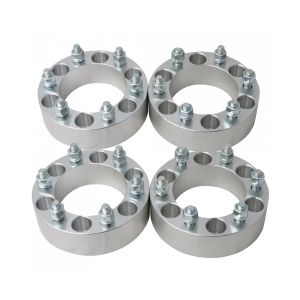9 月 . 29, 2024 03:50 Back to list
How to Replace Seals in Hydraulic Cylinders for Optimal Performance
Hydraulic Cylinder Seal Replacement A Comprehensive Guide
Hydraulic systems are the backbone of many industrial and construction applications, enabling powerful movement and force generation. At the heart of these systems lie hydraulic cylinders, which rely on seals to maintain pressure and prevent fluid leaks. Over time, these seals can wear out, leading to reduced efficiency and potential equipment failure. In this article, we will explore the process of hydraulic cylinder seal replacement, including the signs of wear, the necessary tools, and a step-by-step guide to completing the task safely and effectively.
Understanding Hydraulic Cylinder Seals
Hydraulic cylinders operate by converting hydraulic energy into mechanical motion. To function optimally, they require seals to prevent hydraulic fluid from escaping and to maintain the pressure necessary for operation. Common types of seals found in hydraulic cylinders include O-rings, rod seals, piston seals, and wear rings. These components can degrade due to factors such as temperature fluctuations, contamination, and material fatigue.
Signs of Seal Failure
Before diving into the replacement process, it's important to identify signs of seal failure. Common indicators include
1. Fluid Leaks The most obvious sign of seal deterioration is hydraulic fluid leaking from the cylinder. This can not only reduce efficiency but also pose safety hazards in the workplace.
2. Decreased Performance If the hydraulic cylinder is struggling to exert the required force or is moving slower than usual, it could be a result of worn seals.
3. Increased Noise Unusual noises during operation, such as grinding or whining, may indicate that the seals are failing.
Tools and Materials Needed
To perform a hydraulic cylinder seal replacement, you'll need a few essential tools and materials
hydraulic cylinder seal replacement

- Wrenches and Socket Set For disassembling the hydraulic cylinder. - Seal Removal Tool To carefully extract old seals without damaging the cylinder. - Replacement Seals Ensure you have the correct sizes and types for your specific hydraulic cylinder model. - Clean Rags For cleaning the cylinder during the process. - Hydraulic Fluid To refill the cylinder after replacement. - Safety Gear Gloves and goggles to protect yourself during the replacement procedure.
Step-by-Step Guide to Seal Replacement
1. Preparation Before starting, make sure to safely shut down the hydraulic system. Release any pressure in the lines by opening the valves and allowing the hydraulic fluid to drain.
2. Disassembly Use the appropriate wrenches to remove the hydraulic cylinder from its mounting. Carefully disassemble the cylinder, taking note of the order and orientation of parts for reassembly.
3. Seal Removal Utilize a seal removal tool to carefully extract the old seals. Take care not to scratch or damage any internal surfaces of the cylinder during this process.
4. Inspection Once the old seals are removed, inspect the cylinder for any signs of damage or wear. Clean all components thoroughly to prevent contamination.
5. Seal Installation Carefully install the new seals, ensuring they are positioned correctly and without twisting. It’s advisable to lubricate the seals with hydraulic fluid before installation to ease the process and prolong their lifespan.
6. Reassembly Reassemble the hydraulic cylinder in the reverse order of disassembly. Ensure that all bolts are tightened to the manufacturer’s specifications.
7. Testing After reassembly, reconnect the hydraulic cylinder to the system, refill it with hydraulic fluid, and pressurize the system. Monitor for any leaks or abnormal noises during operation.
Conclusion
Replacing the seals in a hydraulic cylinder is a necessary maintenance task that can enhance the efficiency and longevity of hydraulic systems. By understanding the signs of seal wear and following a structured approach to replacement, operators can ensure their machinery functions optimally, preventing costly downtime and enhancing productivity. Regular inspections and timely replacements of seals are integral to maintaining the health of hydraulic systems, ultimately leading to a safer and more efficient operating environment.
-
The Power of Advanced Sealing: High-Pressure Solutions for Modern Machinery
NewsOct.29,2024
-
Optimizing Machinery with High-Performance Oil Seals
NewsOct.29,2024
-
Maximizing Machinery Efficiency with Advanced Oil Seals
NewsOct.29,2024
-
Ensuring Equipment Longevity with Quality Oil Seals
NewsOct.29,2024
-
Enhance Equipment Performance with Quality Oil Seals
NewsOct.29,2024
-
Custom Oil Seals for Specialized Machinery Needs
NewsOct.29,2024
-
The Role of Wiper Seals in Dust Sealing and Oil Protection
NewsOct.20,2024
Products categories
















